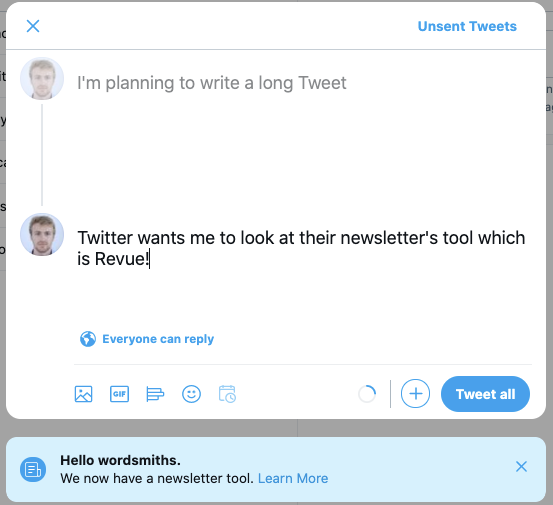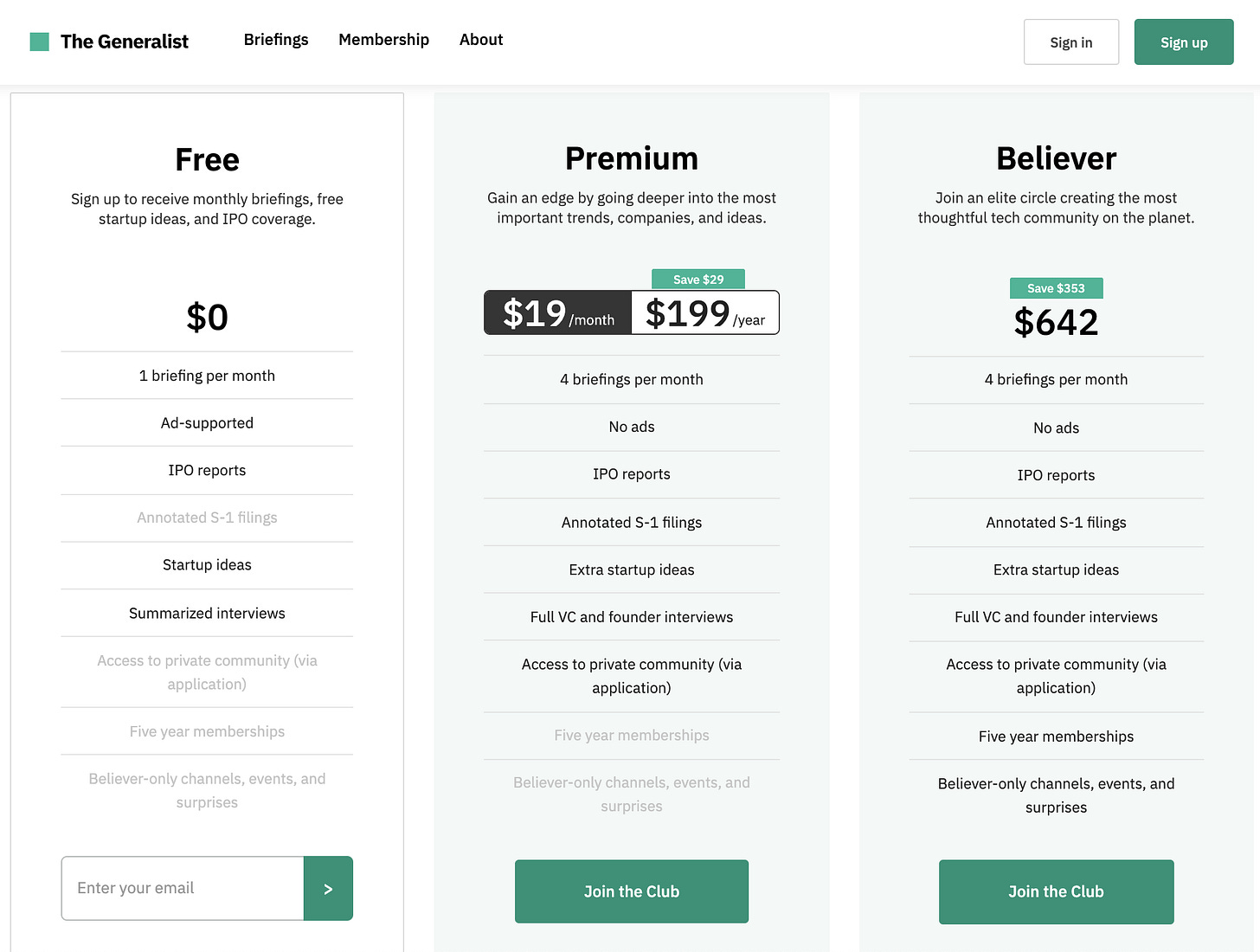Hi, it’s Alexandre from Idinvest. Overlooked is a weekly newsletter about underrated trends in the European tech industry. Today, I’m sharing a short note on the rise of paying newsletters and I’m sharing Maxime’s brillant annual report on the Media & Entertainment tech.
I like Maxime's work. He has been obsessed with the media and entertainment space for years and has been consistent in sharing his passion for the space to the world. He wrote great papers on companies I love like Wattpad, Netflix or Spotify. Last year, he produced a great retrospective report on the media and entertainment space. Today, he is publishing the 2020 version and I'm happy to introduce you this report.


You should definitely read the whole report that you can find on the below button. Maxime breaks down the media & entertainment space into 7 categories: gaming, music, audio, video, social, the creator economy and new media. For each category, he shares the key transactions (both M&A deals and funding rounds), the main trends and his favorite companies/startups to watch out for.
As a teaser, I will spend some time on a trend covered by Maxime which is "the newsletter craze" in the creator economy category. Maxime has worked on the three below slides that are super interesting.
You know that it’s a trend close to my heart. I’m giving you my take on this topic to complement Maxime's work. I will divide this paper into three sections:
The rise of paying newsletters
Recent shifts in the newsletter's game
What's next?
The Rise of Paying Newsletters
I believe that there are three main reasons behind the rise of paying newsletters: (i) the failure of traditional media, (ii) the rise of the consumer subscription economy, (iii) the rise of the creator economy.
First, the failure of traditional media. Traditional media’s transition to the digital world has been a challenge: their cost structure is not suitable for a digital-first world, they rely too much on paper printing and advertising.
Secondly, the rise of the consumer subscription economy. With the emergence of services like Netflix and Spotify, people are now used to paying a monthly recurring fee to get access to a specific service and more specifically to content.
Third, the rise of the creator economy. In the past two decades, the cost to produce and distribute content has dramatically decreased. You don't need a large upfront investment to start writing, singing, podcasting, streaming or doing videos online. Moreover, people are now more willing than ever to work on their own - without being dependent on third party structures like music labels, newspapers, publishing houses. As a result, the number of creators has exploded and starting a paying newsletter has become one of the natural paths to break and earn a living as a writer.
Recent Shifts in the Newsletter's Game
a/ Substack - The catalyser
It's impossible to talk about the newsletter craze without starting with Substack. It's a U.S.-based startup started in 2017. Substack is both (i) a software for writers to start and run a newsletter, (ii) a media for readers who are looking for independent writers.
Writers can easily turn their newsletter into a paying subscription and Substack generates revenues through a 10-12% cut on paying subscriptions.
Numerous casual writers shifted from Medium to Substack because it serves both as a personal blog and a newsletter. Moreover, the shift from one platform to the other was accelerated by Medium's choices to put many articles behind a paywall deteriorating the experience for readers. At the same time, professional writers also left their newspaper to go independent with a paying newsletter.
Today, 500k people are paying for a newsletter on Substack and the top 10 writers are generating more than $15m in revenues per year. In March, Substack raised a $65m series B led by existing investor a16z at a $650m valuation. Substack will use the funding to support its writers with improved publishing and monetization tools and to provide financial support to the next generation of writers.
In my opinion, Substack proved that (i) people are willing to pay a subscription for a newsletter and that (ii) the media industry has a shot at rebuilding its business model around subscriptions and away from advertising.
b/ Twitter, Facebook and Linkedin - A sheep-like behavior
Nowadays, it has become impossible to launch a successful social innovation without expecting other tech giants to copy you with similar products. Twitter, Facebook and Linkedin have all made recent moves in the newsletter category.
In January, Twitter acquired a Dutch startup called Revue which is a tool to create and distribute a newsletter. Revue remains an independent brand and has a 5% commission on subscriptions (vs. 12-13% for Substack). Twitter is developing a deep integration with Revue’s product and is pushing its content creators to try and use Revue.
From my own experience, Twitter and a newsletter software are complementary tools for any writer. Numerous writers are using Twitter as a distribution channel for their newsletter but also as a public brainstorming space for their next newsletter issues.
Facebook is working on a new publishing platform to help writers publish and monetize their content either on a website or in a newsletter. Facebook is currently testing the platform with a small number of independent writers.
LinkedIn is building a creator management team to support its content creator community on the platforms. "We’re starting a community management team to support and grow our content creators, with the mission to source, nurture, uplevel and retain these important voices." As a result, LinkedIn will also end up competing with Substack to attract and retain the best writers on its platform.
All social media giants are actively building tools to support their creators and crafting a newsletter software has been one of the initiatives preferred by players like Twitter, Facebook and LinkedIn.
c/ Exits - Newsletters have become valuable businesses
In November 2020, Business Insider acquired a majority stake into Morning Brew valuing the company at $75m. Morning Brew operates four-business focused newsletters distributed to 3m subscribers with an average open rate of 40%. The company has been profitable since 2018 and is generating $20m in sales and $6m in profit.
In February 2021, Hubspot acquired a majority stake in The Hustle. Hubspot has been building a large community around educational content and The Hustle will be a complementary content source to this strategy. The Hustle has more than 1.5m readers and started in 2016 as a daily newsletter covering business stories.
These are two great proofs that a successful newsletter can be an attractive target for media companies that are trying to reinvent themselves but also for corporates which are willing to buy an audience of readers that can be turned into a lead generation channel.
d/ The Generalist + Every - Content creators are breaking away from newsletter platforms
When your newsletter grows at a crazy pace and you want to take it to the next level, you quickly realize that Substack's product roadmap cannot follow your aspirations and that their 12-13% take rate is too high compared to the value generated.
Since the beginning of the year, several content creators left Substack to launch their own media product. Maxime covered the case of Every in his report.
The Generalist (a newsletter covering tech trends and especially IPOs) did a similar move. It now has its own website with additional features that Substack was not offering like a private community, several pricing plans, its own format etc.
What’s Next?
a/ Newsletters will be bundled to build a new wave of creators-led media
There are innovation cycles which repeats themselves over and over in history. The bundling/unbundling movement is one of them.
Paying newsletters have unbundled the media industry. Individual writers have been able to spin off from their media house to start their own business with a paying newsletter - sometimes earning even more independently compared to what they were earning as editors for a newspaper.
Nonetheless, at scale, it won't financially make sense for consumers to subscribe to dozens of different paying newsletters. Moreover, it's hard for an individual to provide as much value as you can get from other content subscriptions like Netflix and Spotify.
I believe that the newsletter industry will consolidate around several collectives which will bundle their writings into a single subscription and claim to have an exhaustive coverage of a given theme. It will lead to a new generation of creators-led and newsletter-driven medias.
Every is pioneering this trend with its writer collective whose vision is to "cover every industry, every job function, and every topic of interest in business."
b/ We are still waiting for an horizontal creator-driven solution
Today, Substack is showing some growth limitations. On the one hand, its largest creators are leaving the platform because they don't find the features they need to bring their business to the next level.
On the other hand, Substack is facing a dilemma between being a publisher and being a platform. Building the best platform for creators to produce content and building the best publishing offering for readers is not the same thing. It's hard to build for both sides at the same time.
A recurring topic in the creator economy is the failure being constantly driven by creators' needs. I have been on Substack for more than a year and the platform has barely evolved from a writer’s perspective.
As a creator, I would love to have a more horizontal solution with several products to build an audience, turn it into a community and turn this community into revenue-generating products.
Most creators are "Multi-SKU Creators". They don't rely on a single product to make a living but they leverage several products (a newsletter, consulting, podcast, conferences, books, articles etc.) which are combined to make their personal empire. We need adequate tools to accommodate this reality and flexibility and at the moment Substack is not one of them.
Thanks to Julia for the feedback! 🦒 Thanks for reading! See you next week for another issue! 👋








